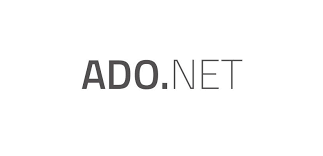.NET communicates with a database using ADO.NET, which provides a set of classes and interfaces for accessing and manipulating data stored in a database.
ADO.NET supports various database systems, including relational databases and XML databases.
ADO.NET uses the following protocols to communicate with a database:
1. OLE DB (Object Linking and Embedding, Database) – This is a low-level, component-based API that provides a generic interface for accessing various types of data sources, including relational databases, spreadsheet data, and more.
2. ODBC (Open Database Connectivity) – This is a widely used API for accessing relational databases. It provides a standardized interface for accessing data, regardless of the underlying database management system.
3. ADO.NET Provider – This is a high-level, .NET-based API for accessing data stored in a specific database management system, such as Microsoft SQL Server, Oracle, or MySQL.
The choice of protocol used by ADO.NET to communicate with a database depends on the specific requirements of the application and the database management system being used.
The ADO.NET provider approach is the most common and provides a flexible and scalable solution for accessing and manipulating data stored in a database, supporting a wide range of database systems and communication protocols.
ADO.NET Main Components
The main classes in ADO.NET include:
1. Connection – Represents a connection to a database, providing methods for opening and closing a connection and for executing commands against the database.
2. Command – Represents a database command, such as a SELECT, INSERT, UPDATE, or DELETE statement, and provides methods for executing the command and for retrieving the results of the command.
3. DataReader – Provides a forward-only, read-only view of the results of a command. The DataReader is optimized for retrieving large amounts of data from a database, as it retrieves data in a streaming manner, rather than retrieving all data into memory at once.
4. DataAdapter – Represents a set of data commands and a database connection that are used to fill a DataSet and to resolve changes made to the data back to the database. The DataAdapter is often used in combination with a DataSet to provide a flexible and scalable way to access and manipulate data stored in a database.
5. DataSet – Represents an in-memory cache of data, providing a disconnected view of data that can be used to work with data independently of a database connection. The DataSet provides a rich set of features for manipulating and querying data, including support for relationships between tables, constraints, and transactions.
6. Parameter – Represents a parameter for a database command, providing a way to specify input values for a command, such as the values for parameters in a stored procedure.
These are the main classes in ADO.NET, and they provide a comprehensive and flexible set of tools for accessing and manipulating data stored in a database.
Design problems in ADO.NET 1
ADO.NET 1 refers to the first version of ADO.NET, which was introduced in .NET Framework 1.0, released in 2002. In this version of ADO.NET, data access was performed using direct methods and properties of the various ADO.NET classes, such as SqlConnection and SqlCommand for SQL Server.
The main design problem for ADO.NET 1 is that it requires developers to write database-specific code for each database management system that they wanted to access.
ADO.NET 2 and the DbProviderFactory
With the introduction of .NET Framework 2.0 in 2005, the ADO.NET DbProviderFactory was introduced.
The DbProviderFactory abstract class provides a set of methods for creating database-specific implementations of various ADO.NET classes, such as DbConnection, DbCommand, and DbDataAdapter, and makes it easier for developers to write database-agnostic code.
ADO.NET DbProviderFactory is a factory pattern that provides a standard way to create instances of database-specific classes, such as connection and command classes, in ADO.NET.
The DbProviderFactory is used by the ADO.NET data providers, such as the SqlClient data provider for SQL Server, the OleDb data provider for OLE DB data sources, and the ODBC data provider for ODBC data sources, to provide a common way to create instances of the classes that they implement. This makes it easier for developers to switch between different data providers and to write database-agnostic code that can work with different databases without modification.
The introduction of DbProviderFactory in ADO.NET was an exceptional milestone that revolutionized database access in .NET. By providing a standardized interface for creating database-specific connection objects, DbProviderFactory enhanced the flexibility and portability of data access code. Its ingenious design allowed developers to write data access logic without being tightly coupled to a specific database provider, thereby promoting code reusability and adaptability. This breakthrough was the steppingstone to the emergence and widespread adoption of Object-Relational Mapping Systems (ORMs).
ORMs leveraged DbProviderFactory’s capabilities to abstract the complexities of database interactions and map database entities to object-oriented representations seamlessly. As a result, developers could focus more on business logic and application development rather than dealing with low-level data access intricacies.
The symbiotic relationship between DbProviderFactory and ORMs continues to shape modern software development, empowering developers with powerful tools to efficiently manage and manipulate data in a database-agnostic manner.
Until next time ))
We are excited to announce that we are currently in the process of writing a comprehensive book about DevExpress XPO. As we work on this project, we believe it is essential to involve our readers and gather their valuable feedback. Therefore, we have decided to share articles from the book as we complete them, giving you an opportunity to provide input and suggestions that we can consider for inclusion in the final release. Keep in mind that the content presented is subject to change. We greatly appreciate your participation in this collaborative effort.
Related Articles
